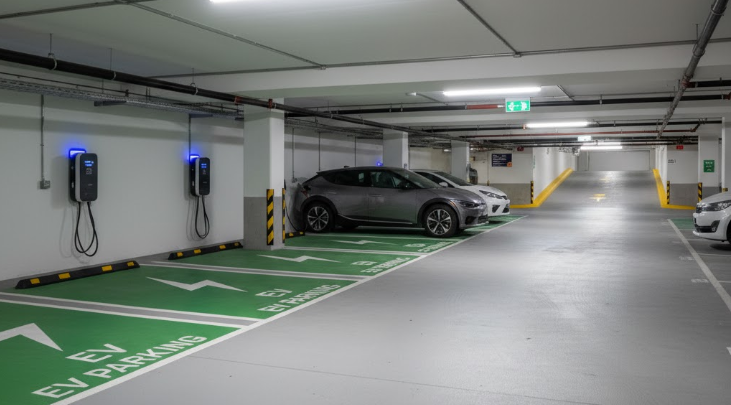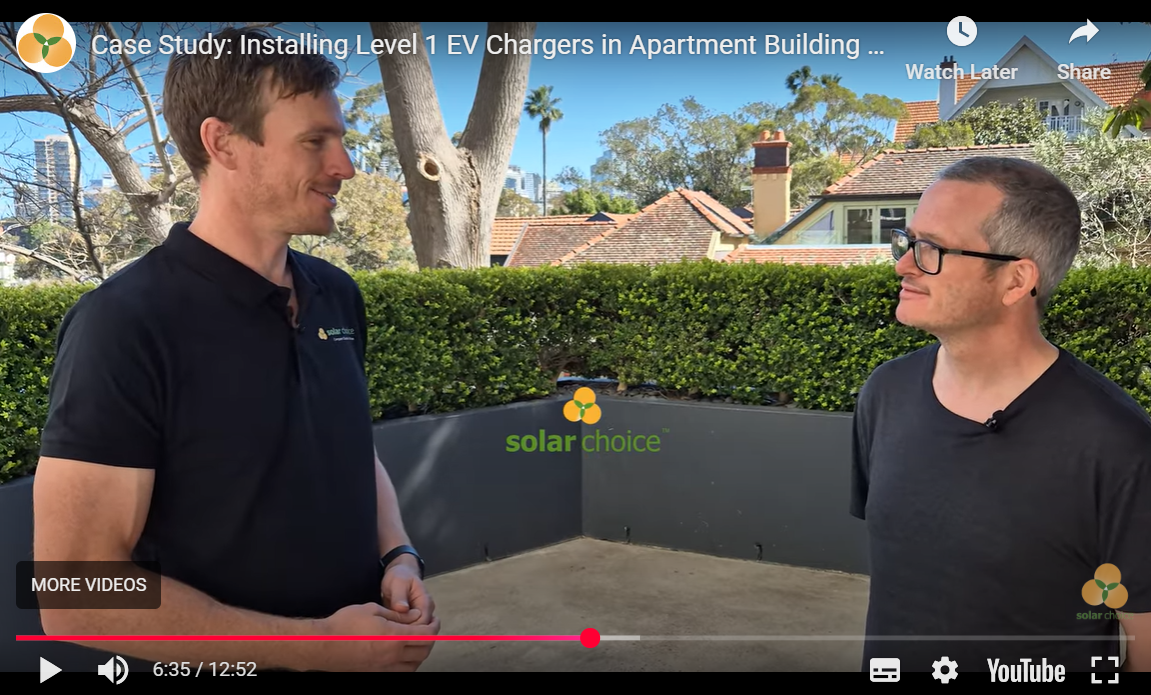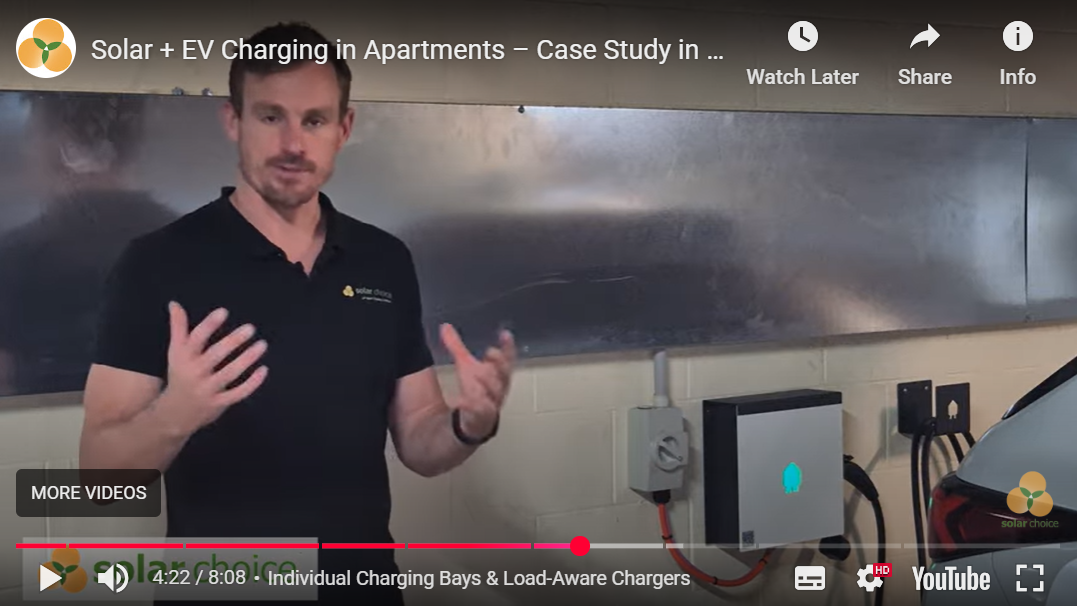Solar Choice has conducted over 100 feasibility studies for apartment buildings across every state in Australia and seen many of those through to installing a solution. EV Charging in apartment buildings is complicated and solutions need to factor in a variety of factors that change for each building.
Not sure where to start? Get some free advice from one of our consultants!
The Challenge of Installing EV Charging Infrastructure in Apartment Buildings
You may think, why can’t the new owners of the electric vehicle just pay for their own chargers to be installed on their own meter?
Firstly and foremost, almost every strata apartment building we have examined does not have sufficient power supply for every parking space to have an operating EV Charger without tripping the power supply to the whole building. You might be able to get away with the first couple of EV Chargers, but at some point you are going to need a more holistic solution.
Electrifying parking bays usually requires a lot of cabling running through the carpark. It will be cheaper and more aesthetically pleasing to have a single contractor complete this work through the most efficient cable paths through an ‘EV Charging Backbone‘.
It is recommended that strata buildings have a strategy and roadmap in place for EV Charging before they give permission to an owner to install a charging device.
Crucially this avoids costly processes of unwinding installations or replacing chargers at a later date and ensures that all owners have equal opportunity to access EV Charging infrastructure.
If there is already power running to the parking spaces and each space has a power outlet, it is quite common that this power is run from the common property meter. This means that the whole building will be sharing the cost of charging the vehicle.
The best place for an Owners Committee to begin is by conducting an EV Charging Feasibility Study
Speak to an expert about EV Charging for your building
Common EV Charging Solutions in Strata Apartments
In our experience most common solutions fit into 3 categories.
Option 1: Visitor Bay EV Charger
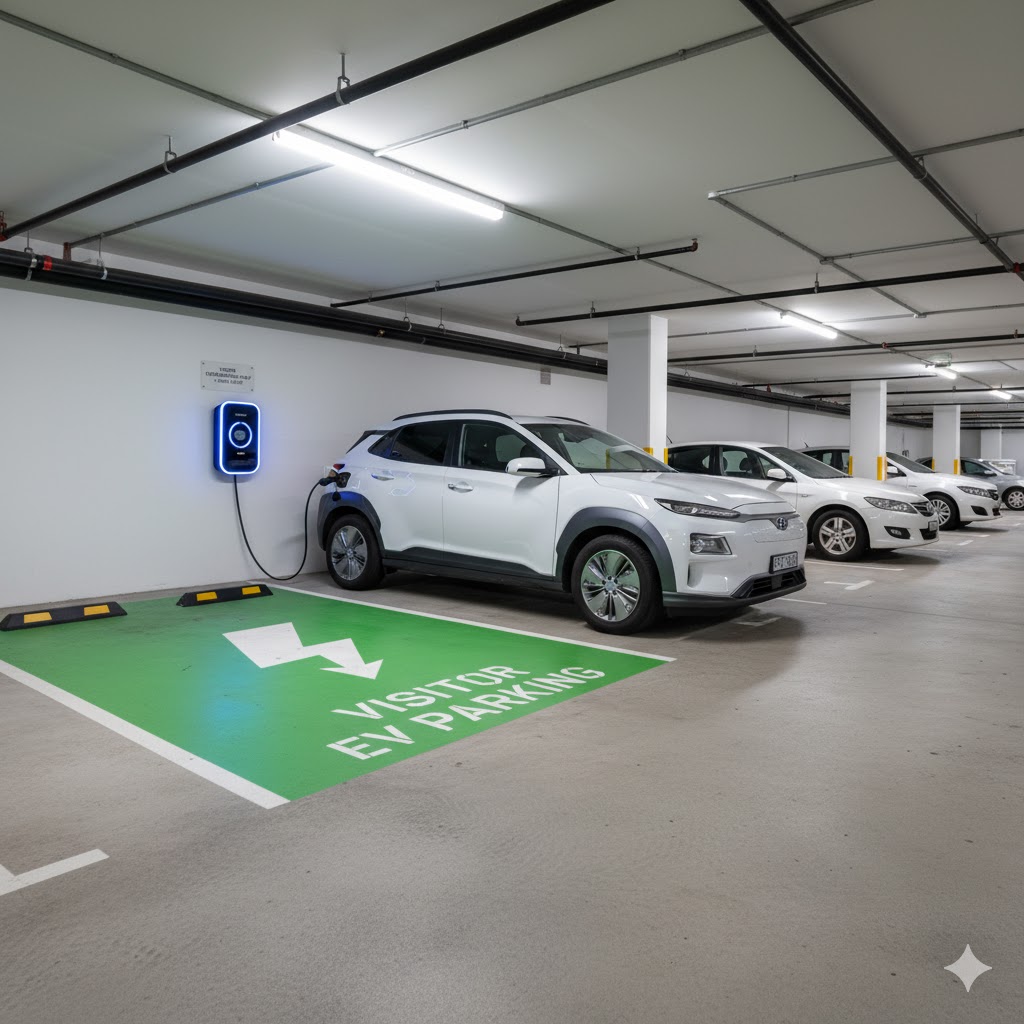
One way to get started with EV charging at your strata apartment without committing to a bigger solution is to install EV charging equipment in the visitor parking bays.
Some rules can be embedded into the charging devices which help limit the maximum use time to ensure the charging equipment can be shared.
This is not a long-term solution as more people buy EVs they will compete over the available chargers. However it can buy some time for the building to save up funds and delay investing in a bigger solution until more owners have EVs.
Option 2: Level 1 – Power Socket Chargers
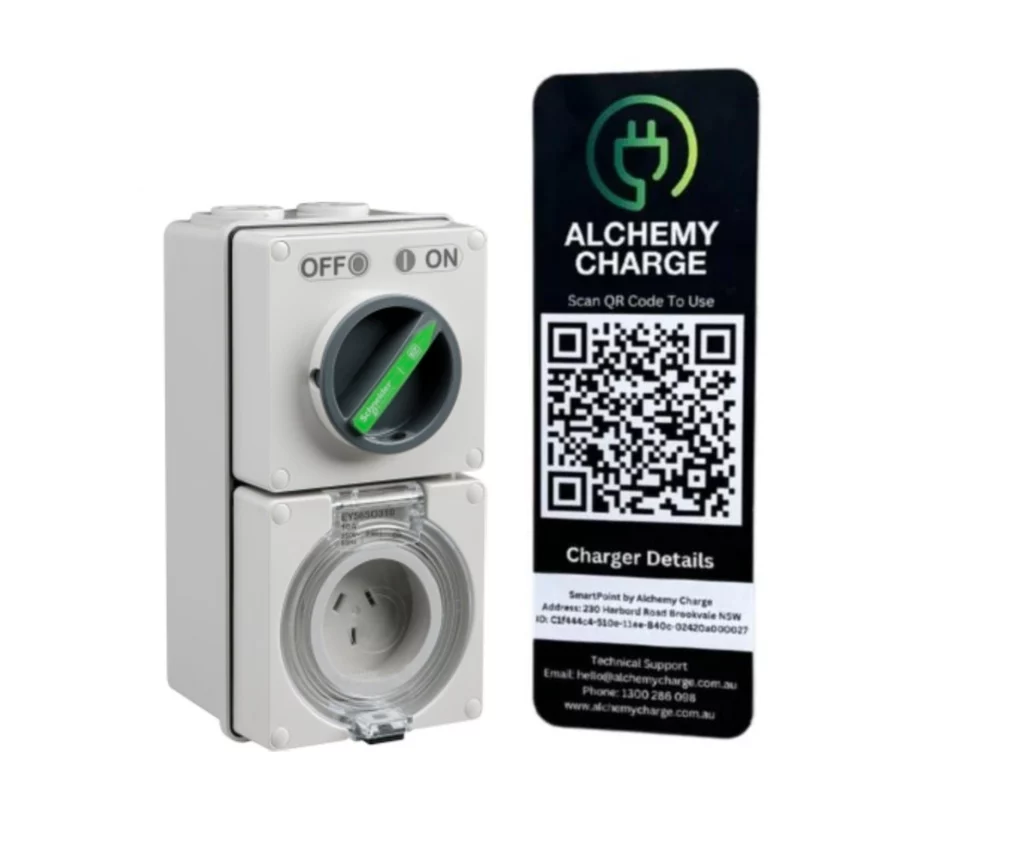
There are different levels of EV charging which require different amounts of power. Trickle charging (level 1) is the slowest option which usually uses a regular 10 Amp power socket. A 15Amp socket can also be considered which can improve the charge speed.
In most cases a 10Amp socket will provide enough power to recharge a car back to 100% overnight. These sockets need to be wired to individual unit electricity meters or be a ‘smart socket solution’ like Alchemy Charge or Combined Energy to ensure that the EV owner pays for the electricity used.
This solution also requires an assessment of the available power capacity to the building and may require a load management solution.
Option 3: Level 2 – Wall-mounted Fast EV Chargers
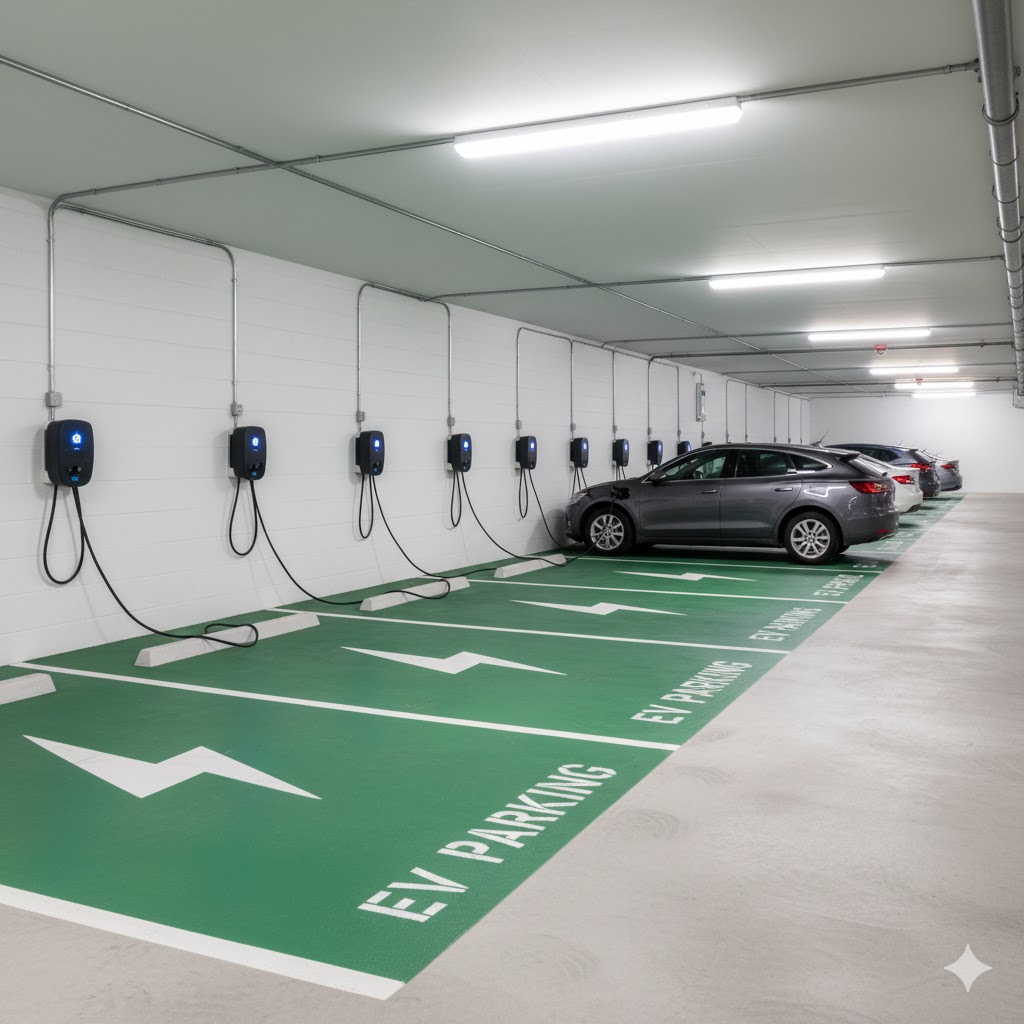
Where buildings would like to provide capability for owners to install level 2 fast chargers in their parking bays then an assessment is required to determine the available power supply constraints and power availability.
It is a common misconception that to enable EV Charging for the building the power supply needs to be upgraded (at a huge cost). In almost every case we have assessed, level 2 charging has been possible with the existing power supply and a load management system which controls the charge speed of all chargers to remain below any constraints.
It is very important for level 2 chargers to be installed in a co-ordinated approach with a backbone system to ensure they can be centrally managed.
How much does it cost to install an EV charger in an apartment?
- Desired EV charging speeds and solution
- Experience/knowledge of the contractor engaged to quote
- Electrical infrastructure and site layout
| Type of Solution | Approximate Cost |
| Visitor Bay EV Charger | $3,000 to $8,000 per charger |
| Level 1 Power Sockets | $1,000 to $3,000 per unit |
| Level 2 Fast Chargers | $1,000 to $4,000 per unit for EV Backbone / Load management (usually paid by Body Corporate) $2,000 to $3,000 per unit for EV charger (usually paid by the relevant owner when they are ready) |
Schedule a free consultation with an EV Charging expert
What are the voting and strata requirements for EV charging decisions?
Each state has different voting requirements which typically range from an ordinary resolution (50% vote) or a special resolution (75% vote).
This means that the strata manager for the building will have to call a meeting with all owners and put forward a formal resolution.
Case Studies From Strata Apartments That Have Installed EV Charging Infrastructure
Sydney Apartment Building – Level 1 Power Socket Installation
- Feasibility & Findings: In December 2023, Solar Choice completed an EV Charging Feasibility Study for the building, using data logger results from the site electrician to confirm 15 Amp power sockets could be safely installed in each parking bay and connected to individual meters without extra billing software.
- Outcome & Decision: The study identified this as the most cost-effective, future-proof solution for EV readiness, and the strata committee selected it over alternative infrastructure options.
- Implementation & Results: Solar Choice secured a competitive quote from a trusted electrical contractor, and the project was unanimously approved by owners, with installation completed in mid-2024 after a two-week onsite program.
Brisbane Apartment Building – Level 2 Backbone Installation
- Project Overview: The body corporate at Aris Apartments in Newstead, Brisbane engaged Solar Choice to conduct a combined solar and EV charging feasibility study for their 55-unit building.
- Implemented Solutions: The owners approved a 40 kW common-area solar system projected to save over $12,000 annually, and installed an EV Charging Backbone with load management and billing software to enable easy Level 2 charger connections.
- Outcomes: The integrated solar and EV infrastructure is expected to enhance property values and rental yields while future-proofing the building for growing EV adoption.
Learn About EV Charging in Apartment With Our Free Webinar Series
We’ve translated our knowledge from completing hundreds of feasibility studies for strata apartment buildings across Australia into a 7 part video educational series. This is designed to give an apartment owner the knowledge they need to lead a project in their building and to upskill strata managers and electricians to understand how to better assist owners corporations.
- Episode 1: Getting Started
- Episode 2: EV Charging ‘Backbone’ Infrastructure
- Episode 3: Individual vs Common Area Meters
- Episode 4: Load Management Systems
- Episode 5: Payment & Billing Systems
- Episode 6: Level 1 EV Chargers in Apartments
- Episode 7: Level 2 EV Chargers in Apartments
If you prefer to learn in video format then its all set up for you in a Youtube Video Playlist.
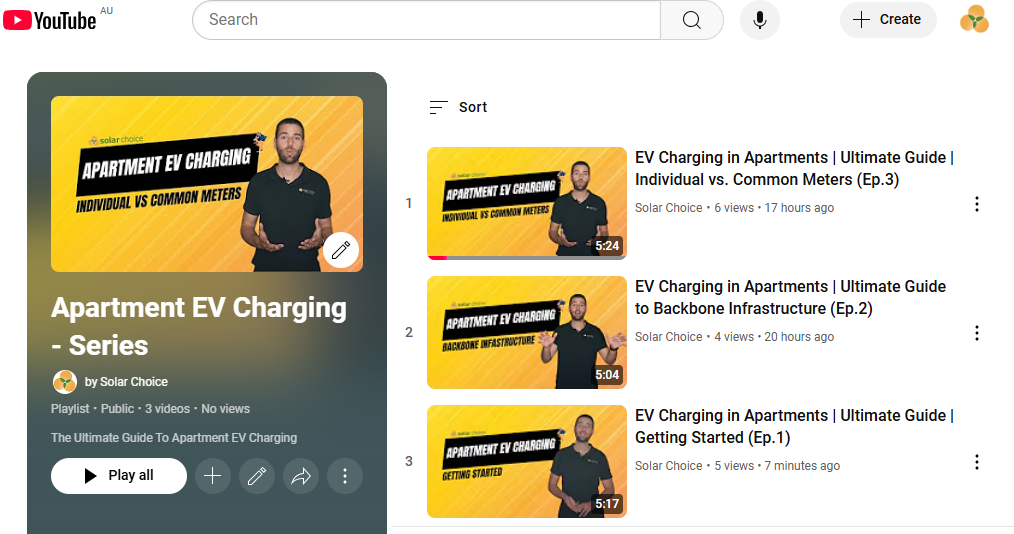
Schedule a free consultation with an EV Charging expert
Frequently Asked Questions (FAQs)
Due to the high power requirements, installing a DC Fast Charger is generally not feasible for electric car charging in apartment blocks.
There are no national or state schemes currently open for EV Charging projects although some have been run in the ACT and NSW previously. Some councils have local incentives for EV Charging so it is a good idea to check their website.
Yes, it’s necessary to inform your home insurance provider about the new addition to ensure you’re covered. This typically does not trigger a change to premiums.
Installing an electric vehicle charger is managed by Australian Standards for electrical work and does not require approval or sign off from an fire engineer.
The short answer is no.
Most strata buildings have limited power supply from the grid. It would only take a small number of residents installing their own charger in order to exceed this limit. If this happens, the mains power supply to the building would trip and you would lose power to the entire building.
- APsystems Battery Review: An Independent Assessment by Solar Choice - 18 December, 2025
- Running Cost of Air Conditioners – Explained - 7 October, 2025
- Air Conditioner Rebate South Australia: What You Need to Know - 19 September, 2025
